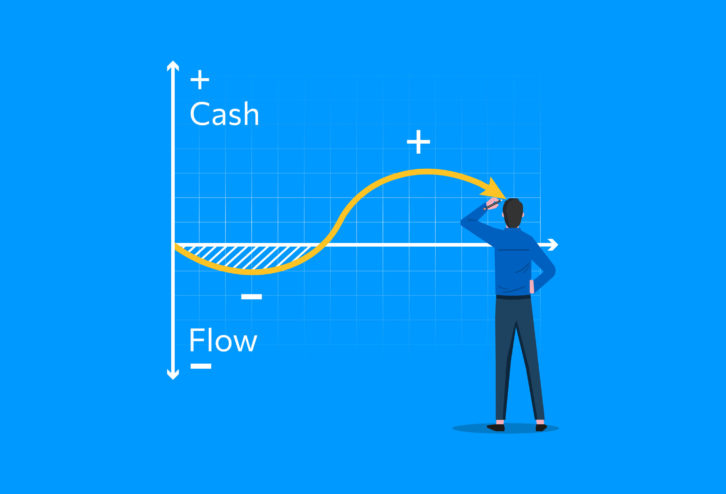[EDITOR’S NOTE: VITAL holds monthly CI Business Mastery Classes where it addresses important CI business topics via a webinar. Each class is supported by an industry brand. VITAL has agreed to share some of the information from these classes in a monthly column of highlights from its most recent webinar. The sixth CI Business Mastery Class was on customer deposits and inventory, and it was supported by Low Voltage Nation.]

Customer deposits and inventory are major components of cash flow in our business. Cash flow is king and yet it can be the most difficult thing to understand and manage in a project-based CI firm with so many moving parts.
While CI Businesses are not the easiest to run, they can be incredibly fun and rewarding. There is the potential to produce net profits that are well above any other industry, and we get to play with the coolest stuff! Another advantage relates to the cash flow of our projects. It’s customary for our clients to pay us substantial amounts of money in advance of the project to procure equipment, build racks, complete designs, and prepare our team for that project. Under normal supply chain circumstances, our inventory is typically purchased just in time. We don’t have the burden of stocking our shelves with items we hope people will buy that many other industries have. So, in theory, our business model is cash rich. Many of our vendors provide terms on their goods, and inventory and labor are often prepaid by our clients. We should ultimately have the best cash-conversion cycle of any industry, and many well-run integrators do take advantage of these cash cycles while others don’t know where their cash is invested.
A relevant topic to review when bringing up cash flow is how we recognize revenue. Revenue recognition and cash are related because some dealers collapse the two, while others treat asking for money as separate from recognizing revenue. The best way to know your cash position and have accurate accounting is to treat asking for cash separately from the recognizing of revenue for product being delivered and work completed.
More VITAL Business Tips: Pulling the Right Profit Levers
If cash requested is recognized as a revenue transaction, we end up recognizing revenue well in advance of any costs. There is no alignment between revenue and cost of goods or expenses.
Another revenue recognition model is job completion, where a dealer will bill upon completion. The limitation here is that we end up recognizing revenue after the costs are incurred. Again, there’s very little alignment.
Then there is recognizing revenue as the goods are received. These dealers are holding on to the customer deposit money and then, as equipment arrives, they expense it and invoice it in the same period. Then they set that equipment aside for that customer. This is getting closer to the kind of alignment that we’re looking for, but it’s still not ideal, especially on the labor side. And it also happens to be a ton of admin work.
Getting even closer to ideal is recognizing revenue as a percentage of completion. These dealers will hold on to customer deposit money, and they bill out or recognize revenue as a percentage of the equipment and labor at milestones throughout the project. While, again, this is getting much closer in alignment, it can wreak havoc on inventory because you truly can’t invoice for 50 percent of a TV and have half of television in stock.
The best way to recognize revenue is production-based. We hold on to customer deposit money and we recognize revenue as the equipment is delivered and the labor is performed, usually on a weekly or monthly basis. This will best align costs with revenue, giving you the most accurate monthly picture of the business and a very clear picture of work in progress, which then gives you a financial backlog and incredibly accurate forecast of what your future months will look like.
Tracking Inventory
Another concept that’s simple but often not optimized is the purchasing and tracking of inventory. We frequently hear that “we are not an inventory business”; “we order only for projects.” Do you ever pay for something in a different month or even a different year from when it is installed? Absolutely. In fact, that’s happening more now than ever. We contend that every integration company should track inventory value on items above a certain cost.
When you track inventory value in your accounting system, the inventory that resides in your possession remains an asset versus an expense. Once those items are invoiced and revenue is recognized, it moves from an asset on the balance sheet to cost of goods expense on the income statement at the exact same time the revenue is recognized. This aligns your revenue and costs to the same reporting period, allowing you to see the exact gross margins in real-time.
More VITAL Business Tips: Keeping Score for Your Business
The other significant thing about tracking inventory value is that you know exactly how much cash is tied up in that inventory. If you expense inventory or purchases at the time those purchases are made, you have no idea how much money is sitting in your warehouse. When you align your cost of goods sold with revenue in a monthly period, you get actionable, accurate, and timely management data that literally pays for itself.
Keep in mind that this is under normal circumstances for supply chain. We get that today the supply chain is very challenging, but this is the goal you want to shoot for. Be very careful and be very conscious of the inventory that you have in backstock.
We’ve talked about the difference between miscellaneous parts and equipment in our other columns. We define “parts” as items that we buy in bulk, are really hard to track, and are typically not ordered for a specific job. We recommend that you don’t even bother trying to track them. Choose a unit cost and draw a line. Then track only those things that are above that cost. We recommend the unit cost of about $25 or $50 as the breakpoint. If the unit cost is below that, make those items non-inventory and don’t try to track the value you have in stock because it’s an exercise in futility.
By tracking deposits, inventory, and keeping accounts receivable under control while making continuous profits, you can stack large sums of money and cash in the business. The CI business can be very lucrative when managed correctly!
For more information about the CI Business Mastery Classes and the other services VITAL provides, visit http://growwithVITAL.com.






